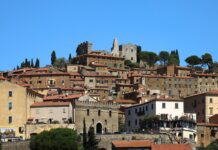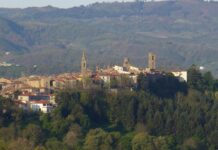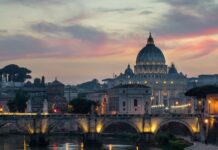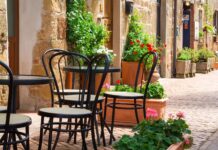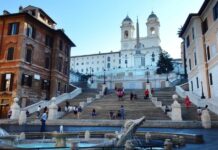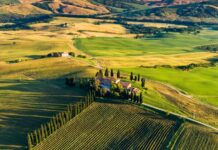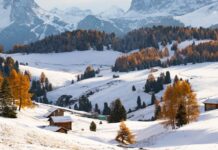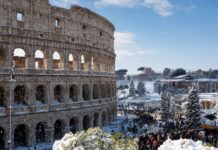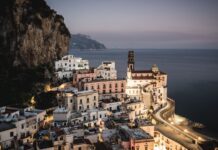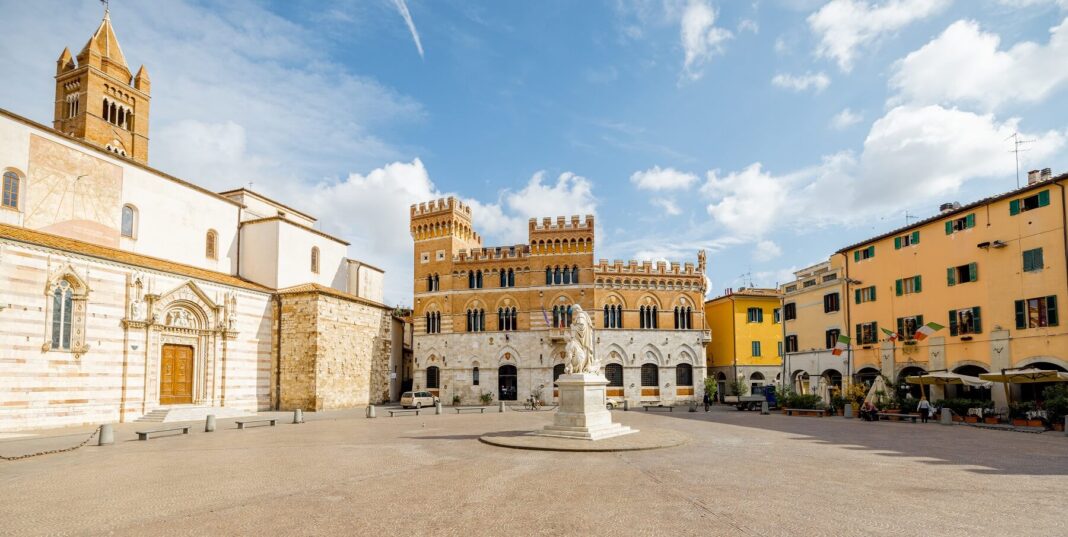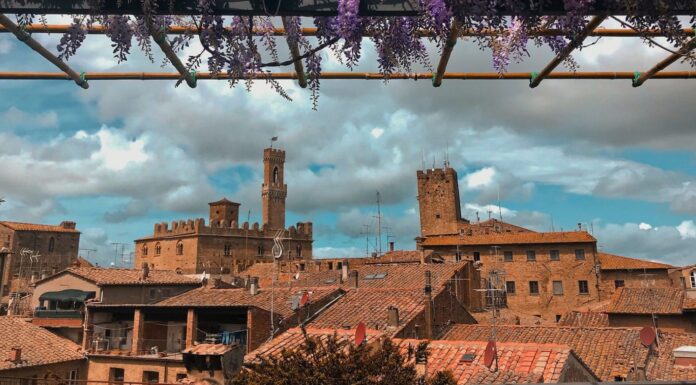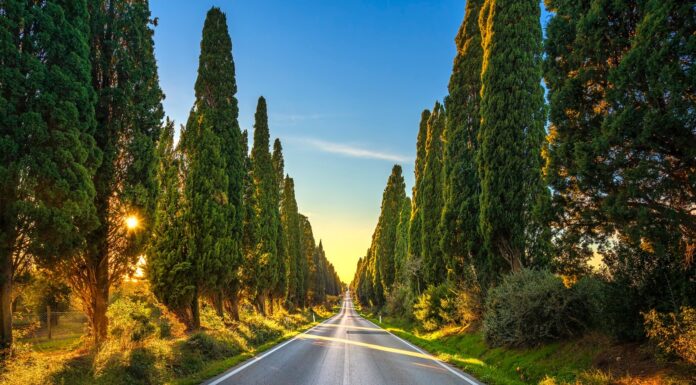Perched along the shore of the Tyrrhenian Sea, Grosseto is known for its soothing beaches, historical architecture, and stunning scenery. This beach town is one of Italy’s most underrated seaside gems, with so much to do, see, and try.
This town possesses the ingredients for the summer vacation of your dreams, including bustling squares, historic landmarks, and breathtaking views. Dive into crystal-clear water, wander the city walls, salivate at the sight of local tortelli maremmani, and taste exquisite wine. Plus, there are several bordering coastal towns and parks that are just as magical.
This summer, it’s your turn to tan by a marina while sipping an Aperol Spritz. Let us guide you through all the mandatory spots you should hit during this well-deserved getaway. From ancient sites teeming with history to unforgettable culinary experiences, you won’t regret a single moment in here.
6 Places to Visit in Grosseto
Because this town is so densely packed with landmarks and attractions, it may feel overwhelming to navigate at first. This is why we have compiled a perfectly-curated itinerary for your first few days in this rich paradise. Here are all the must-see stops you should make if you are planning a trip here.
1. Piazza Dante
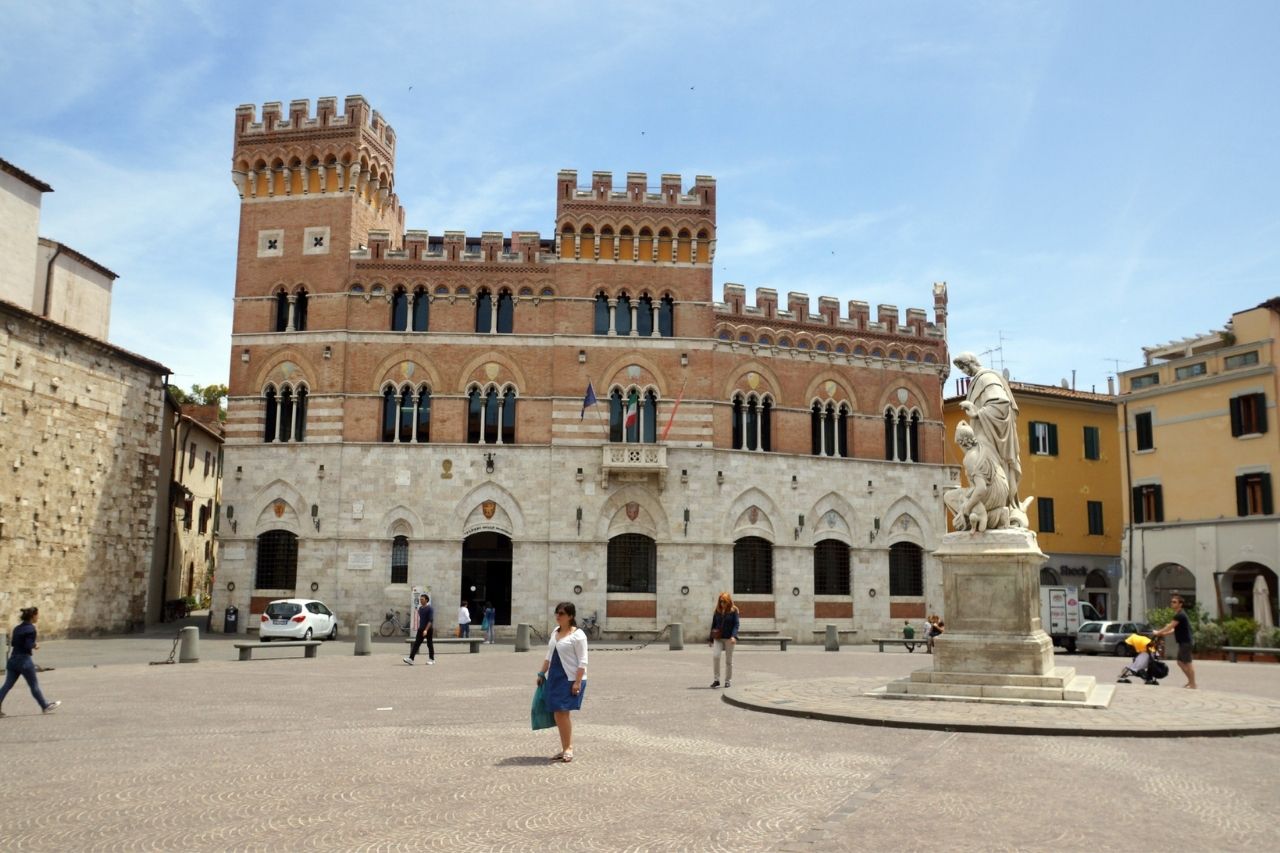
Piazza Dante, the plaza named after the famous Italian poet Dante Alighieri, should be at the top of your list. Surrounded by elegant Renaissance buildings such as the stunning Palazzo Aldobrandeschi, this is the most vibrant corner of town. Another nearby building is the Church of San Francesco, which houses a painting by well-known Italian artist Simone Martini. To experience lively restaurants and quaint little shops, go for a coffee in this salty-aired square by the sea.
Here, the blend of historical grandeur and bustling modern life creates an enchanting atmosphere. Street performers often grace the square, adding to the lively ambiance, while the scent of freshly brewed coffee and local delicacies wafts through the air, inviting passersby to indulge in the culinary delights of this picturesque location.
2. The Cathedral
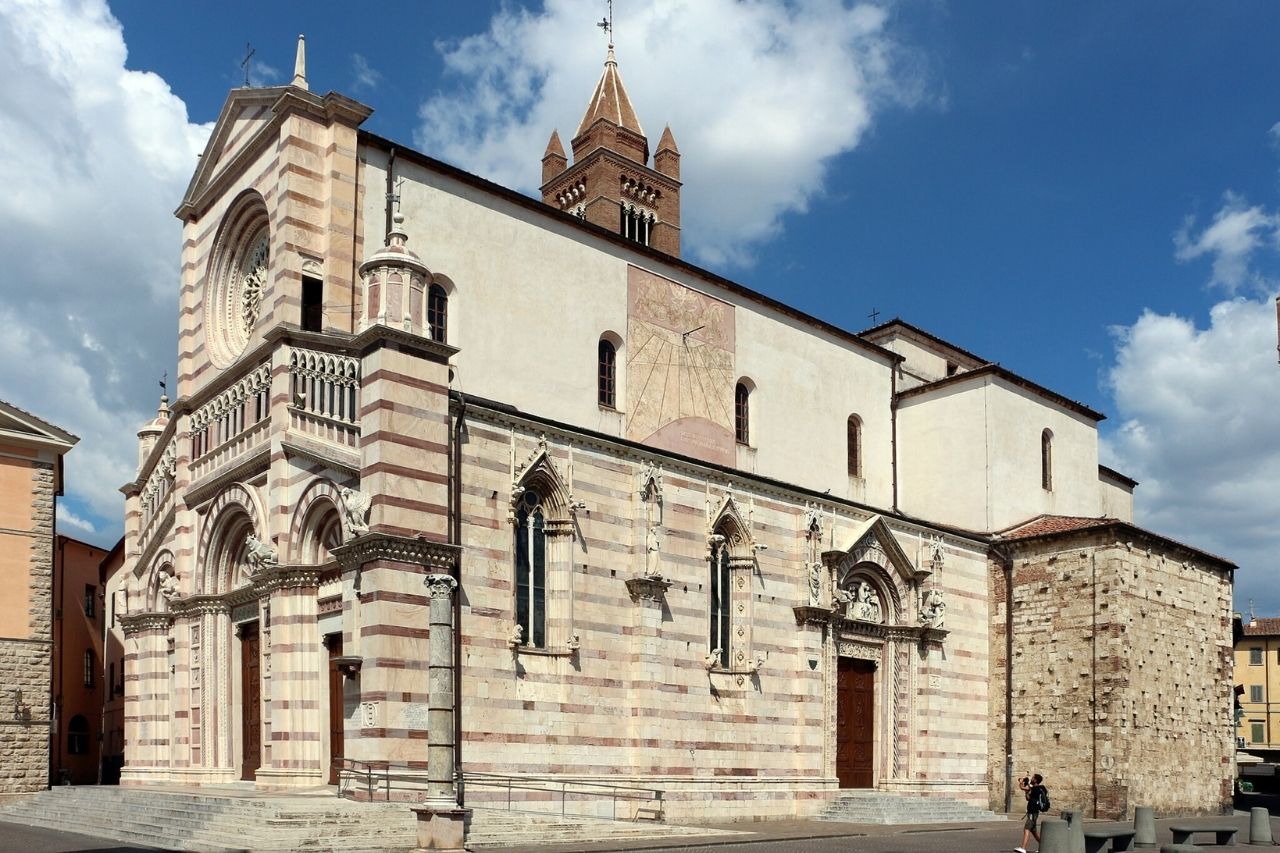
The Cathedral is arguably the most crucial monument in the city. Built at the tail end of the 13th century, its front entrance is thoroughly decorated with plant and animal motifs. The façade of the cathedral is made of white and pink marble and features a gorgeous rose window and two bell towers. The interior of the cathedral is equally impressive, with a nave and two aisles covered in ancient frescoes and artworks. Lastly, intricately-adorned, Gothic windows illuminate the delicate marble sculptures within the halls.
Visitors often find themselves in awe of the stunning acoustics during organ performances, which fill the cathedral with rich, reverberating melodies, enhancing the already sublime and transcendent atmosphere.
3. The City Walls
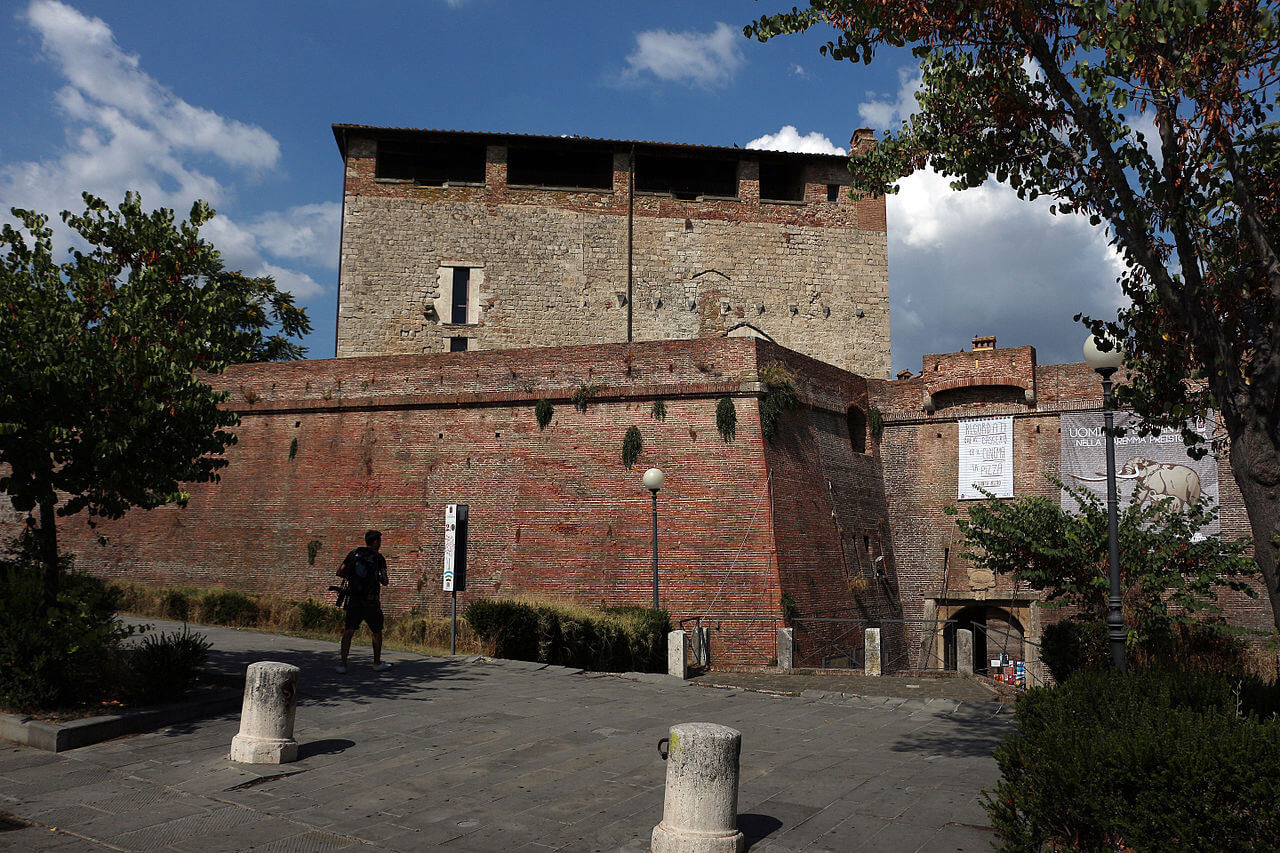
The City Walls of Grosseto is a well-preserved set of fortifications that surround the historic center of the city. With a hexagonal perimeter, the brick and limestone structure runs for almost 3 kilometers around the center. It is punctuated by four main gates: Porta Vecchia, Porta Nuova, Porta Rudiae, and Porta San Pietro, among others. Climb atop these ancient walls for some incredible panoramic views of the Tuscan landscape.
As you walk along the walls, the journey through history is palpable, with each step offering a glimpse into the past. The view from the top is not only a photographer’s delight but also provides a unique perspective on the blend of medieval architecture and lush greenery that defines the region, making it an unforgettable experience for any visitor.
4. The Etruscan and Roman town of Roselle
The Etruscan and Roman comune of Roselle provides the ideal dose of enchanting history within the city. Established in the 7th century B.C.E., this well-preserved civilization inhabited central Italy before the rise of the Roman Empire. Roselle was strategically established on a hill overlooking the Ombrone River, making it a significant center for trade and commerce. Here, you can stroll along the roads that were once buzzing with business hundreds of years ago.
Walking through Roselle is like stepping back in time, with its ancient ruins and remnants of the past offering a tangible connection to the Etruscan and Roman eras. The amphitheater and forum, still visible today, narrate the city’s vibrant cultural and social history, inviting visitors to imagine the grandeur of its heyday.
5. Cassero Senese

This fortification offers a glimpse into Grosseto’s medieval past. It’s an intriguing site for those interested in military history and architecture. The views from the walls provide a unique perspective of the city, making it a great spot for photography enthusiasts. The structure’s robust design and strategic location underscore its historical significance in defending the city.
Exploring its corridors and battlements, visitors can easily imagine the bustling life of soldiers and lookouts. The panoramic vistas from atop not only capture the beauty of Grosseto but also offer a moment of tranquility, away from the hustle of modern city life.
6. Chiesa di San Pietro
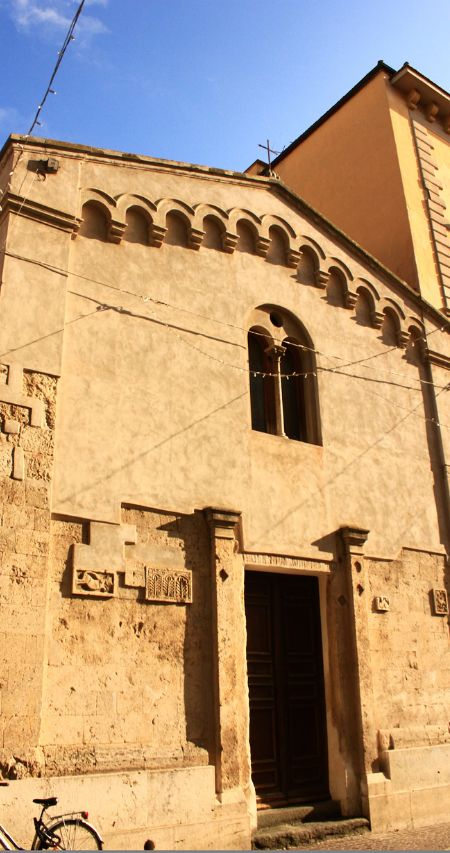

This small, Romanesque-style church offers an intimate and serene experience. The ancient sculpted panels and the Gothic inscription add to the mystical ambiance. It’s a hidden gem for visitors seeking tranquility and a connection with the medieval era. The church’s modest size and artistic details make it a delightful discovery in the heart of Grosseto.
Its peaceful environment, away from the city’s bustling streets, provides a perfect haven for reflection and admiration of medieval art and architecture, making every visit here a journey back in time to a quieter, more contemplative era.
The Maremma Territory Bordering Grosseto
While this town houses stimulating historical monuments and wondrous attractions, it also neighbors the mesmerizing territory of the Maremma. Stretching from the northern town of Cecina toward southern Lazio, this surrounding region is another jewel of the Tyrrhenian coast. History buffs, tree-hugging nature lovers, and even foodies will enjoy the Maremma.
Maremma Natural Park

First off, the Maremma Natural Park is a mandatory destination for those hoping to witness a diverse range of flora and fauna. The sanctuary covers an area of about 100 square kilometers, encompassing a wide range of hills, forests, beaches, and wetlands. Here, you can hike, cycle by the beach, ride horses, and birdwatch. Witness authentic Italian wildlife first-hand, including endangered species such as the Italian wolf, the wild boar, and the European otter.
The Beaches of Marina di Grosseto
Between crashing waves and salty sea foam, this marina is the ideal coastal paradise to unwind in. These shores are some of the most beautiful in Italy, with long stretches of golden sand and translucent waters. Here, you can find anything from sun-soaked loungers and parasols to wide open, untouched shores. In addition to beach clubs, free beaches like Le Marze beach and Rocchette beach are a short drive away. Surrounded by pine forests and dunes, they offer a more natural, unspoiled setting.
Read more: Best Beaches in Tuscany – Discover The Beauty
The Coastal Town of Castiglione della Pescaia
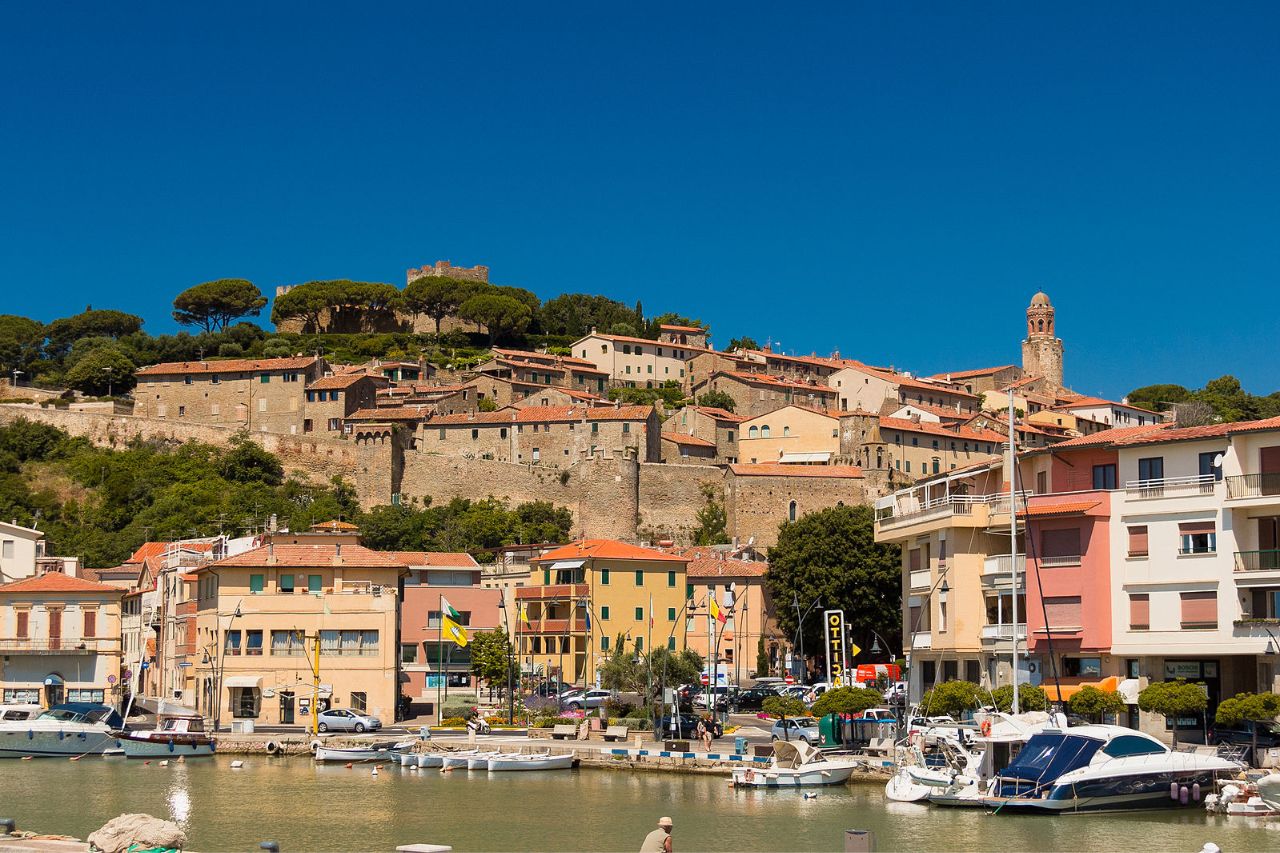
Castiglione della Pescaia is one of the several whimsical beachtowns of the Maremma region that you’ll never want to leave. The medieval fortress of Castello di Castiglione della Pescaia sits on a hilltop with sweeping views of the Tuscan seaside. This promontory exhibits hypnotizing views of the nearby Elba and Giglio islands below. Enjoy summer sports and delectable seafood in this fishing town that dates back to the Roman times.
The Port Town of Talamone
Another unforgettable fishing town in the Maremma is Talamone, with a harbor that juts out into the vast ocean. This town’s rocky promontory runs along Maremma’s southern border and is enveloped by typical Mediterranean vegetation. Follow the tiny path underneath the fortress to find yourself on the serene Bagno delle Donne beach. To see waves cut by sailors and kite surfers, perhaps the beach along Talamone bay is the one for you.
Where to Stay: Best Hotels in Grosseto
With such blissful surroundings and enticing landscapes, this area is sure to provide high-end accommodation for all types of travelers. Between sleek B&Bs and cozy beachside lodges, your utopian summer in Tuscany will become a reality.
Chic Apartment in Town Center
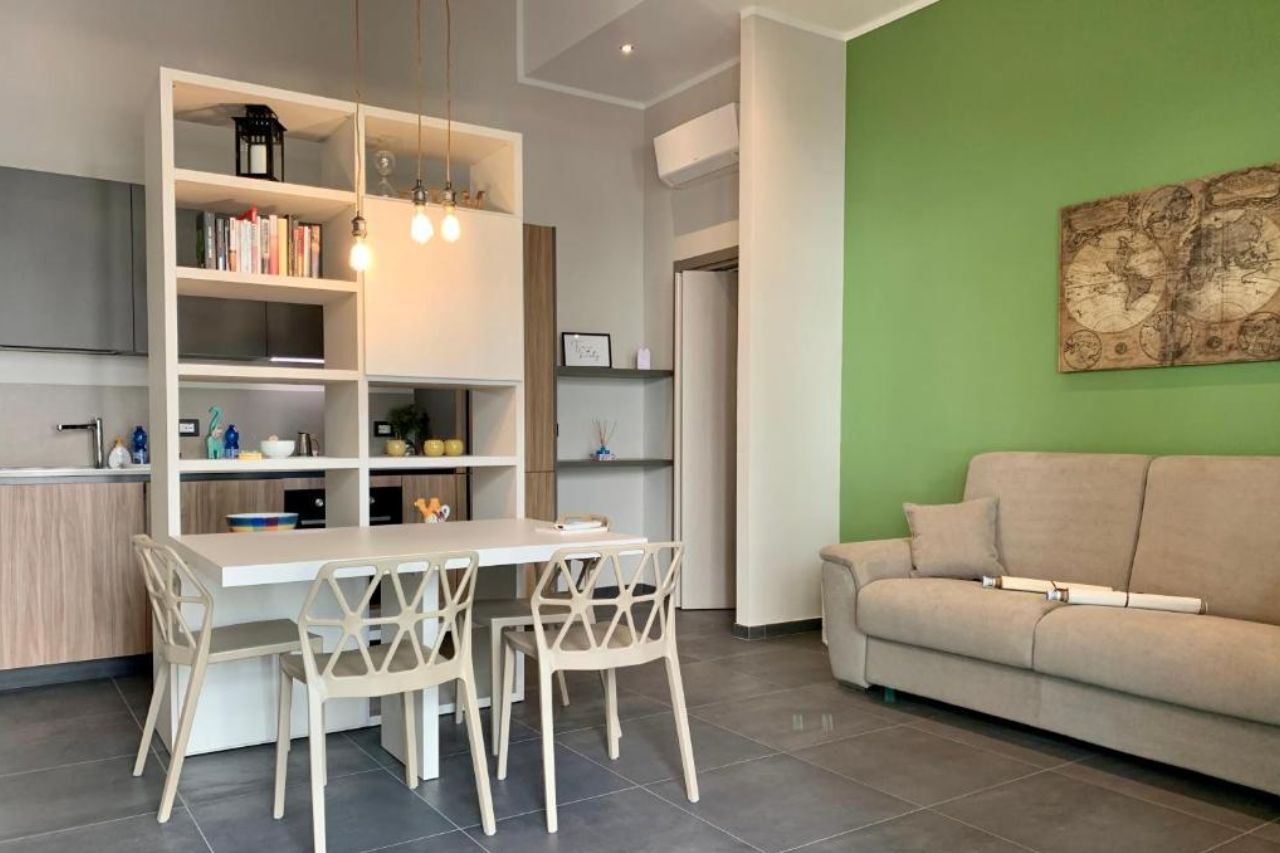
For a centrally-located, modern stay, book the La Forgia apartment. This travel-sustainable property offers a fully-equipped kitchenette, courtyard views, and an airport shuttle upon arrival. Minimally decorated, its welcoming energy adds to its high rating of 9.4 out of 10 on Booking.com. It’s also worth noting that this property has been particularly recommended by couples and pairs.
Renovated, well-located B&B
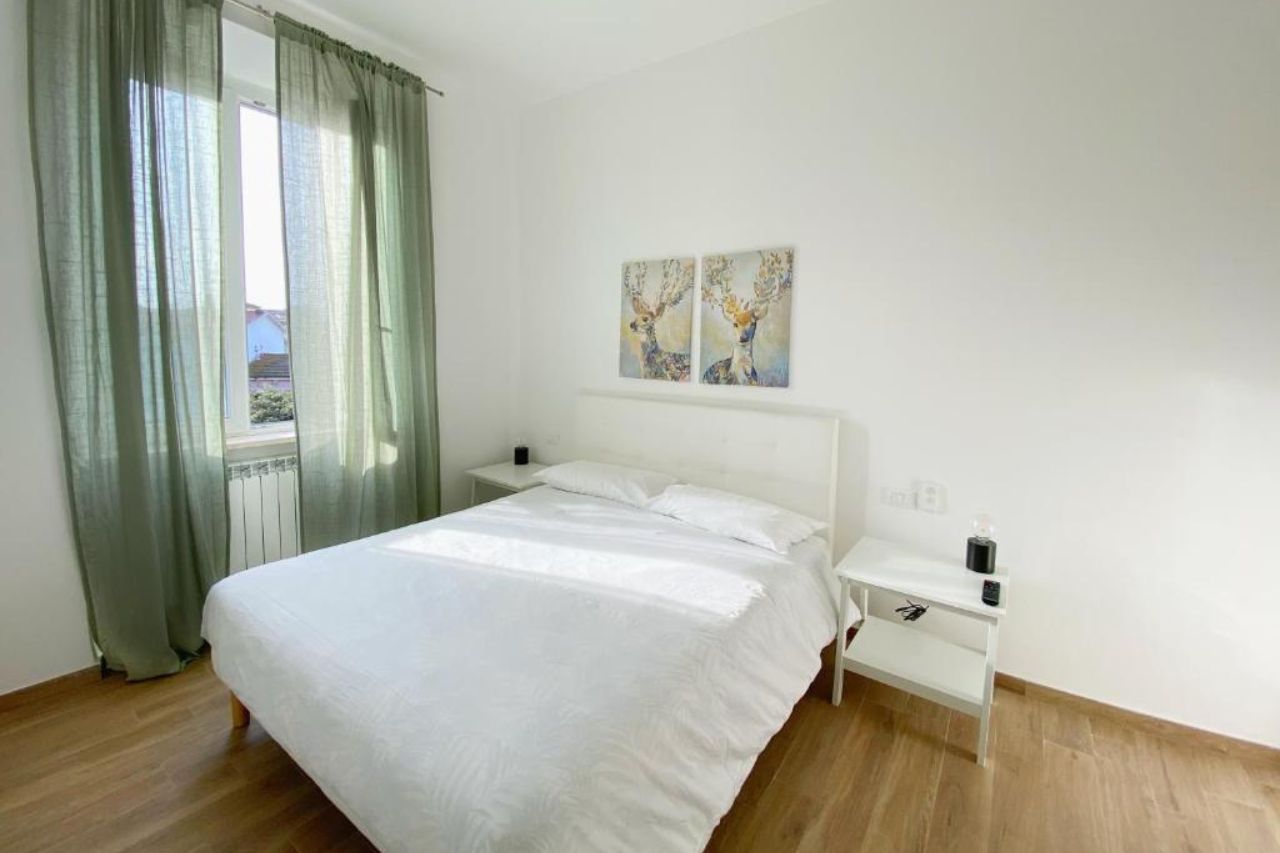
B&B La Locanda Chic is not only travel sustainable but also the top-rated location in town for cleanliness. A highly-reviewed continental breakfast and remarkable city views are among the many perks of this stay. Only 0.8 km from the town center, guests have also raved about this location’s incredibly cordial hostess.
Family-friendly Lodge on the Beach

If your travel plans include a larger group, your best bet is the Comfort Lodge Rocchette. Here, you can settle into a cabin that is only steps away from the dazzling Tuscan beaches. This pet-friendly, well-kept lodge additionally provides a pool, a terrace, and the perfect ambiance for a fun family vacation.
Wine in Grosseto
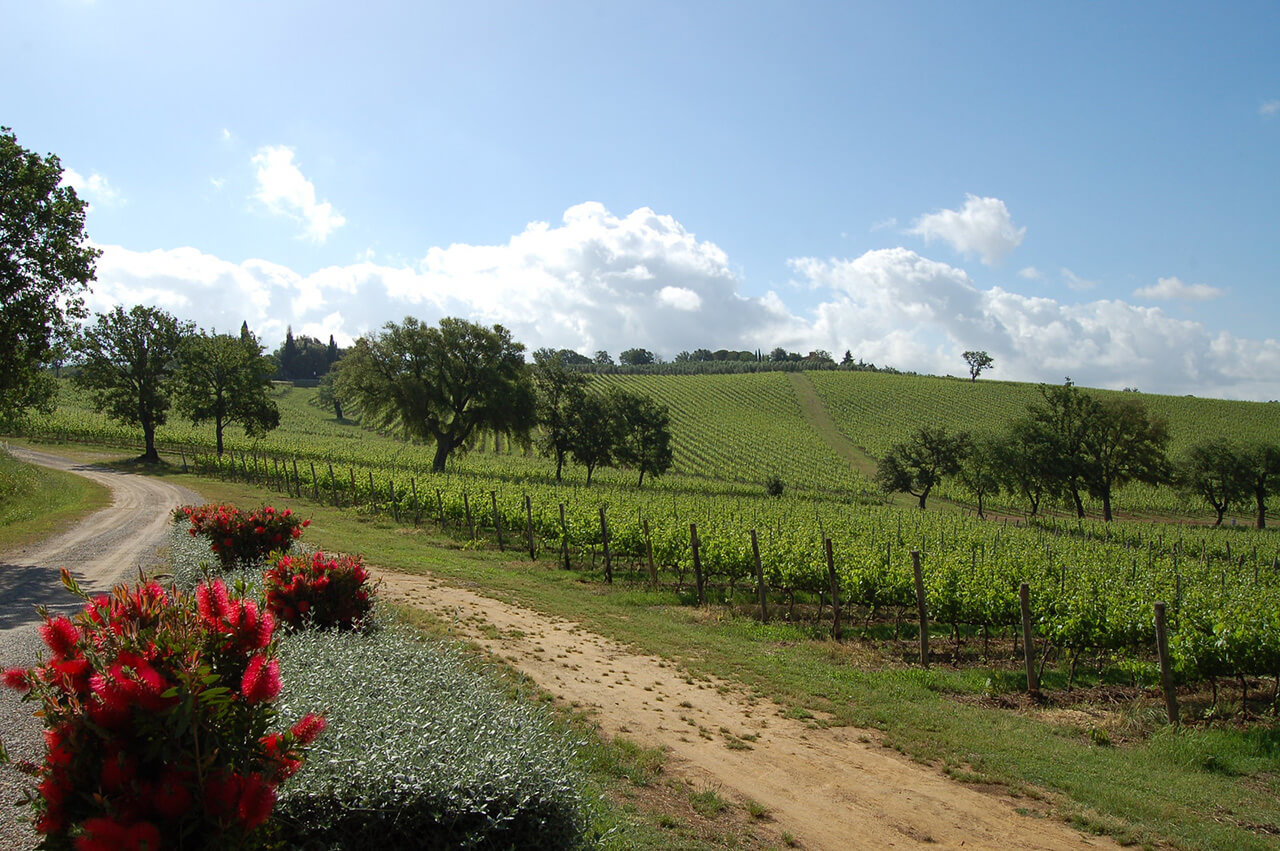
It’s no doubt that such enthralling Tuscan views pair perfectly with this town’s refined cuisine. To satisfy your tastebuds, we have determined all the regional foods and local restaurants that will make your visit worthwhile.
Tortelli Maremmani
The tortelli maremmani is the signature, enlarged ravioli of the Maremma that has permeated the region’s tradition for centuries. Their filling usually consists of ricotta cheese, spinaches, and sometimes other ingredients such as nutmeg, garlic, or parmesan cheese. This hearty, widely loved first course is often served with a simple tomato sauce or a butter and sage sauce.
Morellino di Scansano Wine
You can never go wrong by adding a glass of wine to your Italian feast. Our top pick is the Morellino di Scansano wine, known for its bright ruby color, fruity aroma, and soft tannins. The wine is named after the Morellino, a local term for the dark brown color of the native Maremmano horse. It typically ages in oak barrels for at least six months, giving it subtle notes of vanilla and spice.
Restaurants in Grosseto
The city offers a variety of dining options, from traditional Tuscan trattorias serving homemade pasta to upscale restaurants showcasing the region’s finest ingredients. Here are a some of notable restaurants in Grosseto:
Il Tagliapasta Grosseto
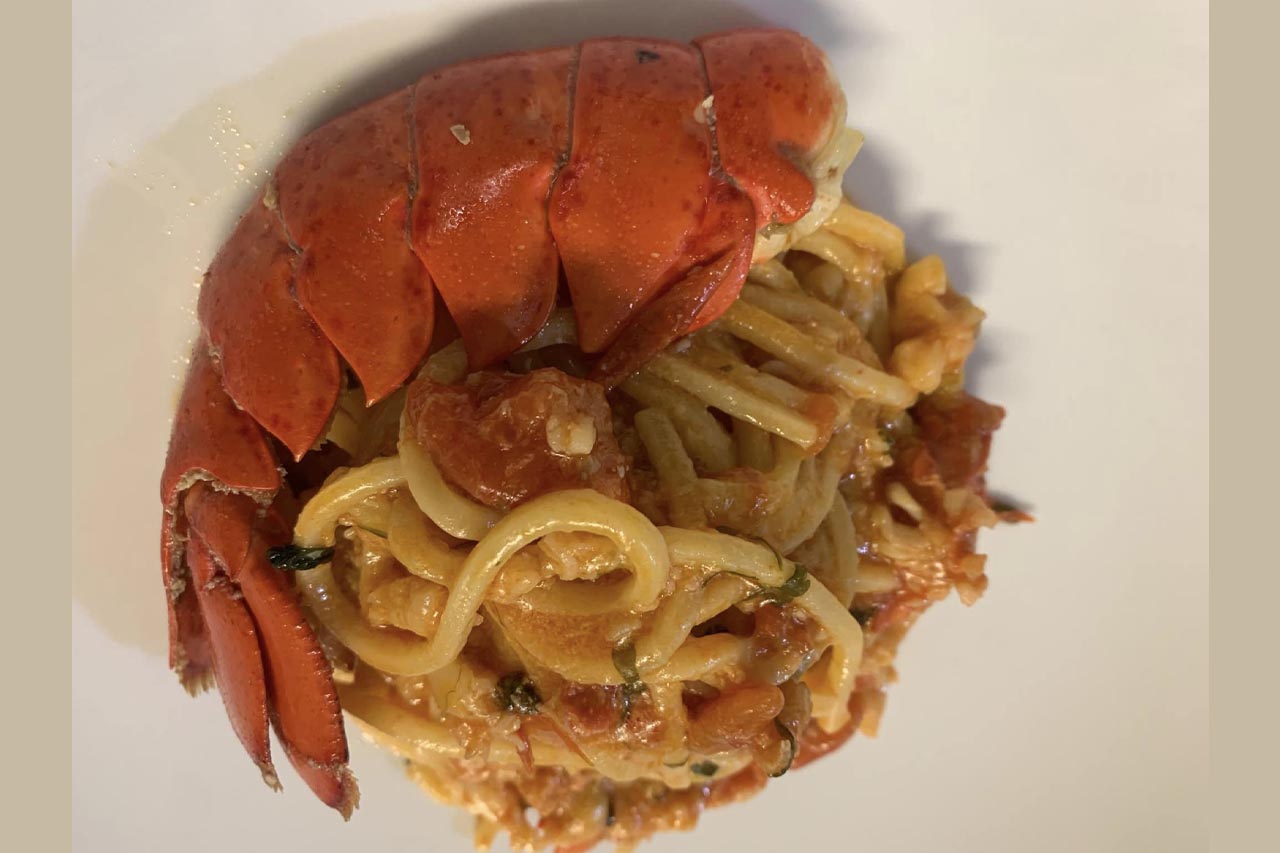
As for restaurants, this one should be your first priority in your gastronomic adventure. The restaurant’s name translates to “The Pasta Cutter,” which is fitting given its emphasis on fresh, homemade pasta. The location is known for its cozy and intimate atmosphere, adorned with rustic wooden beams and exposed brick walls. Rated 4.5 stars on Google by hundreds of clients, this restaurant has been deemed one of the best in town.
Ristorante Grantosco

A Michelin star recipient, the Ristorante Grantosco is one of the most impressive restaurants in the country. Here, you can experience local seafood and dishes that reflect the seasonality of each ingredient used. Also rated 4.5 stars on Google, customers fall in love with this spot’s environment in addition to its food. Ristorante Grantosco’s minimalist design blends contemporary and traditional elements in both its indoor and outdoor seating.
How to Get To Grosseto
There are several airports nearby that provide bus and train services to the town. After flying into the Rome (FCO), Pisa (PSA), or Florence (FLR) airport, take the following routes.
To get there from Rome, there is a direct train that departs from the Roma Termini station. The services run every hour, seven days a week, and the journey lasts about an hour and a half.
The train is also a reliable option from Pisa Centrale. Trenitalia offers an hourly train that takes about 2 hours, with ticket prices ranging from $11 to $22.
The route from Florence is a better fit for those who prefer taking the bus. Autolinee Toscane – Linee Regionali operates buses from Stazione Leopolda to Oberdan every 4 hours, each trip lasting about 2 hours.
If you are able to travel by car, the quickest route from Rome is via E80. This will take about 2 hours and 20 minutes. The same route can be taken from the north in Pisa, which will take about 1 hour and 45 minutes. From Florence, take via Raccordo Autostradale Firenze – Siena and SS223, which will take a total of around 2 hours.
Places to See Nearby Grosseto
Lastly, Grosseto is adjacent to many other undeniably fascinating destinations sprinkled throughout Tuscany. Porto Ercole in Monte Argentario, Orbetello, Massa Marittima, and Pitigliano are among the several sensations to explore nearby.
Porto Ercole in Monte Argentario
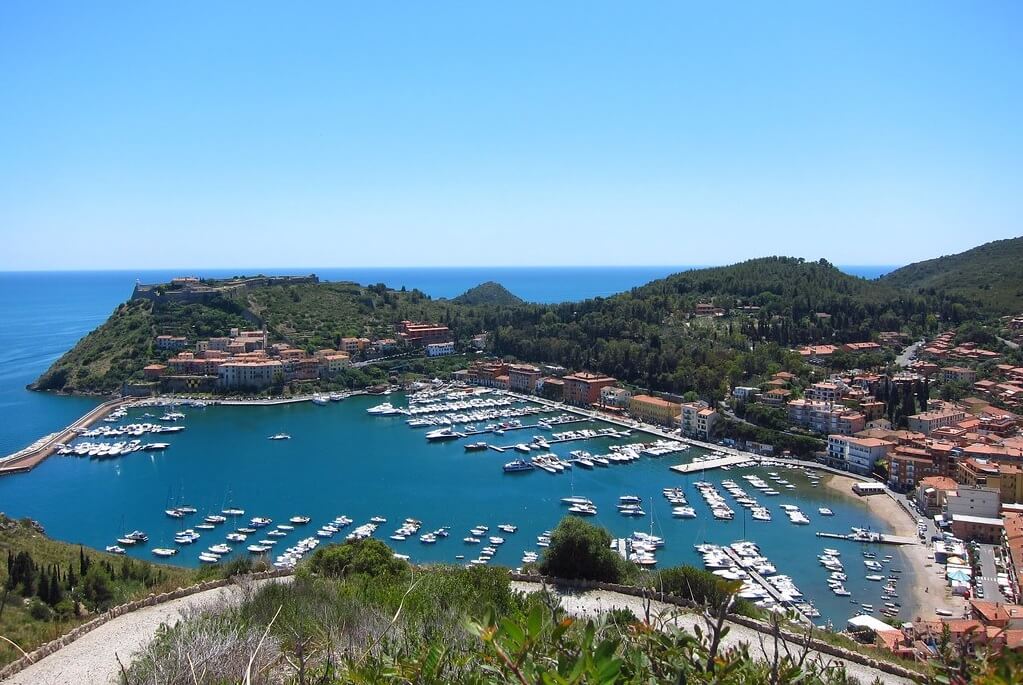
This coastal getaway’s characteristic Spanish port has a long maritime history and attracts tourists from around the world. The picturesque harbor is lined with colorful fishing boats and luxury yachts, nestled within jaw-dropping, sandy shores. Tour the 16-century Forte Stella here, a medieval fortification built by the Spanish to keep out pirates and other invaders.
Read more: Porto Ercole – A Seaside Escape Amidst Spanish Fortresses
Orbetello
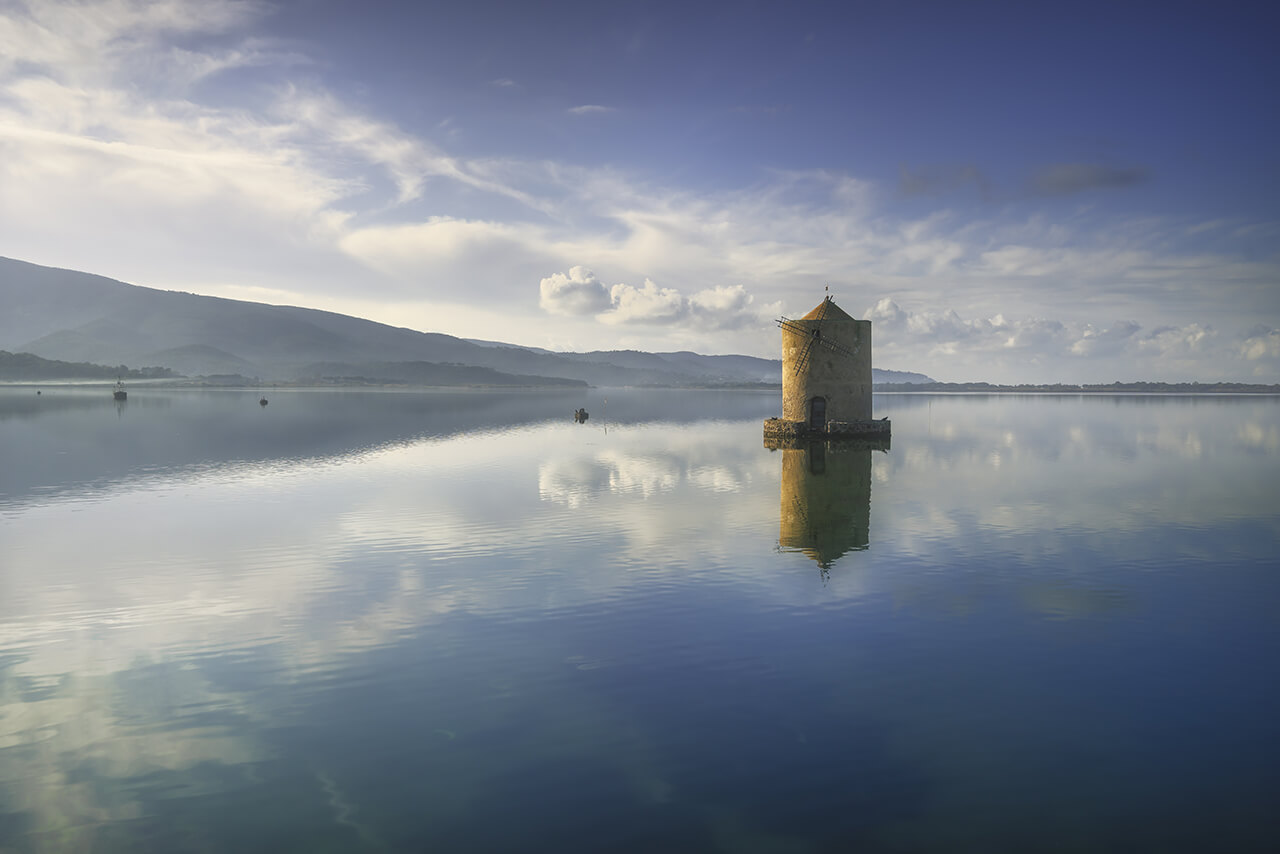
Orbetello is another heavenly medley of history, culture, and nature. It is situated on a narrow strip of land that connects the Monte Argentario peninsula to the mainland. Visit the town center and wander narrow alleys, old houses, and small squares. Alternatively, view the Gothic, 14-century Cathedral of Santa Maria Assunta or go for a splash in the iconic lagoon.
Massa Marittima
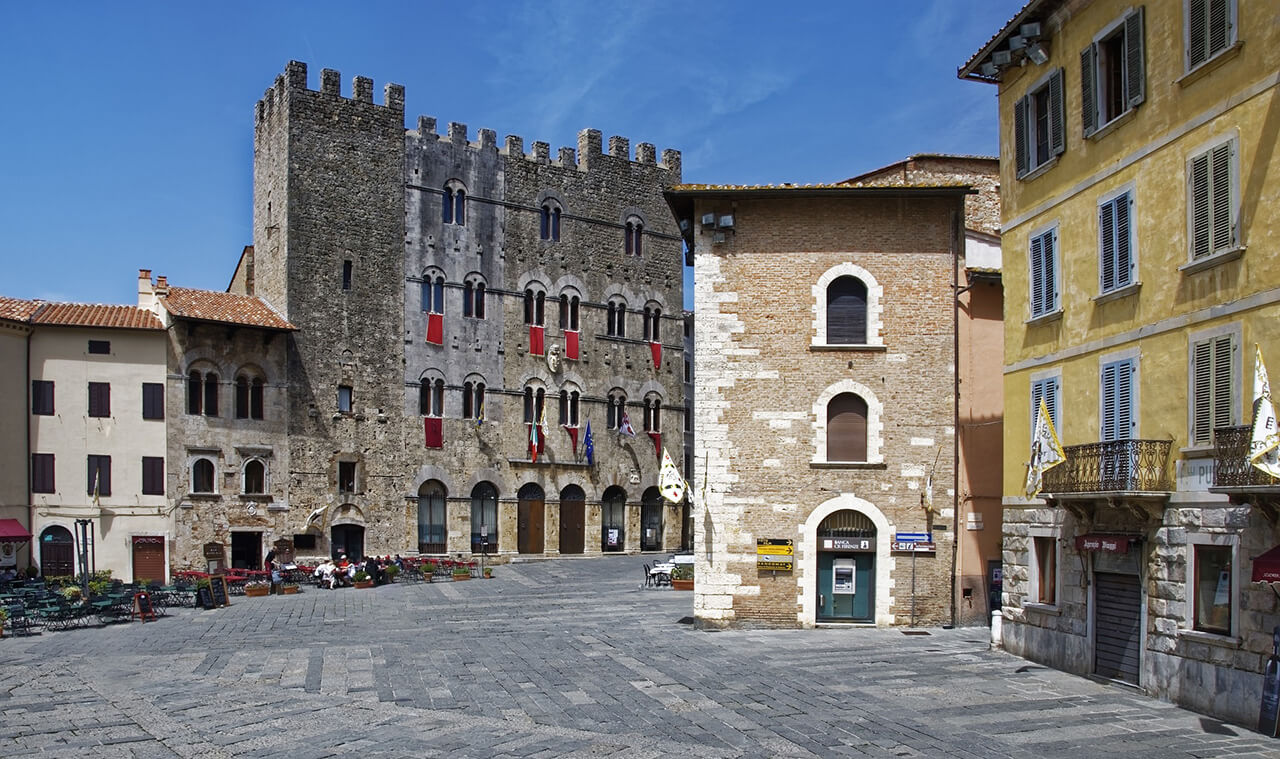
Massa Marittima is a medieval town overflowing with charming plazas, legendary churches, and captivating museums. If you find yourself in this corner of Tuscany, stop by the Cathedral of San Cerbone, which dates back to the 13th century. This monument goes against the architectural norm of its time by being positioned diagonally in the main plaza. Of course, indulging in the traditional, mouthwatering food and wine of Massa Marittima is also an absolute must.
Pitigliano
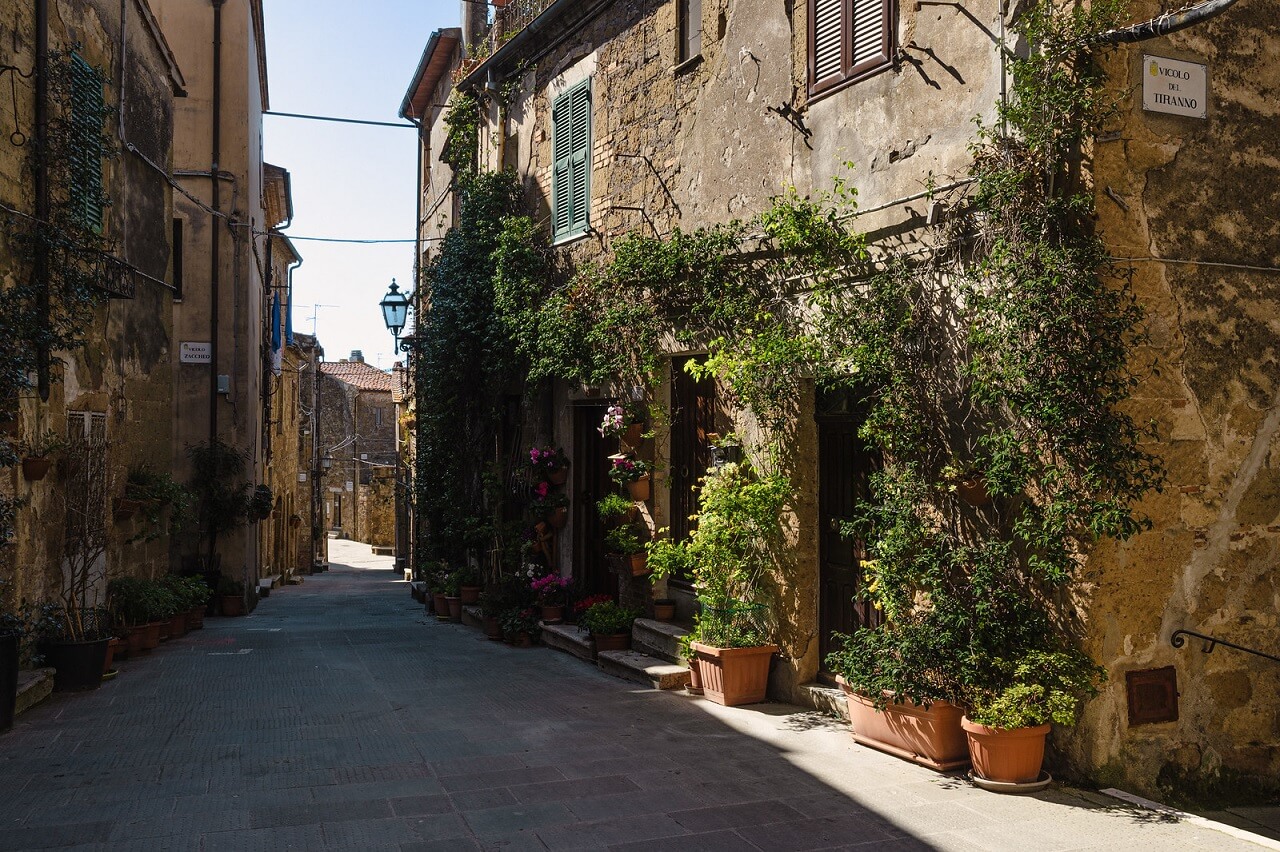
To witness a classic representation of the beauties of southern Tuscany, embark on a journey to Pitigliano. From a 17th-century aqueduct to an ancient “Little Jerusalem,” this town is yet another marvel of Italy. Situated on a tufa rock ridge overlooking the Lente River, Pitigliano is known for its historic buildings and churches. The Palazzo Orsini is a prime example, which dates back to the 14th century. Other attractions include the Vie Cave hike, the Fountain of the Seven Spouts, and the Civic Archeological Museum.
Conclusion: Is Grosseto Worth Visiting?
Yes, it is definitely worth visiting! We know you may be initially drawn to the more popular Tuscan destinations of Florence or Siena. However, this charming and historic town offers a spectacular variety of attractions and experiences for visitors.
One of the town’s main attractions is its historical center, which is surrounded by ancient walls and features beautiful architecture. There are numerous museums, art galleries, and cultural institutions that display the plentiful history and art of the region.
Also known for its natural beauty, the town has glamorous beaches and nature reserves located nearby. The Maremma Regional Park, for example, offers miles of beautiful coastline and hiking and biking trails between forests and hills.


